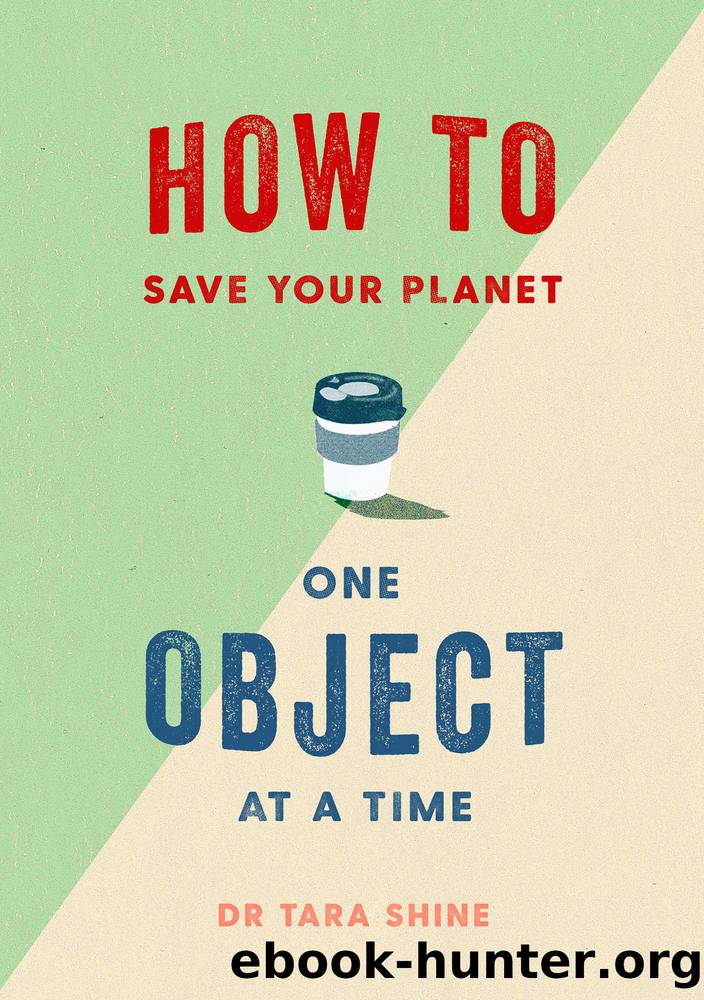How to Save Your Planet One Object at a Time by Tara Shine

Author:Tara Shine
Language: eng
Format: epub
Publisher: Simon & Schuster UK
Published: 2020-04-15T16:00:00+00:00
About 600 million aerosol cans are used in the UK
every year, equivalent to ten per person, and the
products most commonly packed in aerosols are
deodorants, antiperspirants and body sprays.
__________
DEODORANT
Have you ever stopped to check your armpits for body odour before an important meeting or a date? Concerns about bodily smells and perspiration have not always been such a concern. In fact, in order to sell deodorants, early manufacturers had to start by convincing people that the natural act of sweating was embarrassing.
Deodorants and antiperspirants are different but are often grouped as one, as I’ll do here. A deodorant, for example, kills odour-producing bacteria while an antiperspirant actually prevents sweating, rather than covering up the smell. The first deodorant, called Mum, was invented in 1888 in the US and the first antiperspirant was called Everdry and went on sale in 1903. Before that people used removable ‘dress shields’ in the armpits of their clothes to reduce the need for washing the whole garment.
Deodorants typically comes as a spray in an aerosol or as a roll-on. In Europe, half of all people use an aerosol deodorant while 27 per cent use roll-ons and 13 per cent use sticks.
THE IMPACTS
Aerosol deodorant sprays fell out of favour with conscious consumers in the 1980s when it was discovered that the propellant gases they contained were contributing to the hole in the ozone layer. In some effective, multilateral policy-making, the gases were banned and alternatives were found to enable aerosols to continue to be in everyday use today.
Aerosol cans contribute to the demand for aluminium (what the can is made from) and contain chemicals called propellants to help the deodorant ingredients spray out of the can. The latest innovation in deodorants is the new compressed aerosol cans – they use less aluminium, less propellant and are smaller to ship, all reducing their carbon footprint. Roll-on deodorants tend to come in a plastic container with a plastic rollerball. The container and the ball are made of different types of plastic, which unfortunately usually renders the whole item unrecyclable.
The deodorants and perfumes we use every day are contributing to indoor air pollution, which damages human health. In fact 40 per cent of the chemicals added to products like deodorant end up in the air we breathe. Spray deodorants release volatile organic compounds (VOCs, see also page 168) that interact with other chemicals in the air to form ozone and particulate matter (the tiny particles that can penetrate deep into the lungs) – both of which are thought to be harmful air pollutants.
Deodorants contain myriad ingredients, some of which have been the cause of concern among consumers. The aluminium component – used to temporarily plug our sweat glands – is hazardous in high doses, but there is no proof that its application as an antiperspirant is harmful. Other noteworthy ingredients include phthalates, parabens and triclosan (see pages 26, 40–43 and 121); make your own decision on what you would like to use on your body.
WHAT YOU CAN DO
Use a roll-on
Download
This site does not store any files on its server. We only index and link to content provided by other sites. Please contact the content providers to delete copyright contents if any and email us, we'll remove relevant links or contents immediately.
How to Do Nothing by Jenny Odell(3220)
A Forest Journey by John Perlin(3018)
The Plant Messiah by Carlos Magdalena(2868)
Babylon's Ark by Lawrence Anthony(2572)
The ESV Study Bible by Crossway Bibles(2496)
Energy Myths and Realities by Vaclav Smil(2422)
Fatal Storm by Rob Mundle(2157)
Abbey in America by Murray John A(2042)
Witness Tree by Lynda V. Mapes(1877)
Brokeback Mountain by Annie Proulx(1773)
Client Earth by James Thornton(1724)
Shadows on the Gulf by Rowan Jacobsen(1710)
Coming Back to Life by Joanna Macy(1679)
Cosmos by Carl Sagan(1672)
Water Rights and the Environment in the United States by John Burch(1637)
Mycelium Running: How Mushrooms Can Help Save the World by Paul Stamets(1624)
Ten Billion by Stephen Emmott(1597)
The overachievers by Robbins Alexandra(1518)
Ecological Intelligence by Daniel Goleman(1486)
